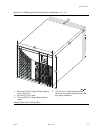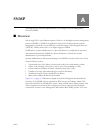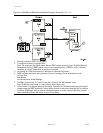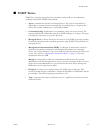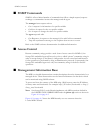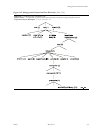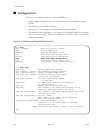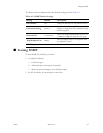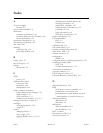96053 Revision L A-3
SNMP Terms
■ SNMP Terms
SNMP uses a manager/agent structure, a database, and a small set of commands to
exchange information. SNMP terms include:
• Agent–A module that resides in a managed device. The agent is responsible for
responding to requests from the manager and for sending traps to a recipient that
inform the systems administrator of potential problems.
• Community String–Applications use community strings for access control. The
manager includes the community string in its SNMP messages to an agent. The agent
consequently can accept or reject the operation.
• Managed device–A device that hosts the services of an SNMP agent that provides
monitored information and controlled operations using SNMP. L-Series libraries are
managed devices.
• Management Information Base (MIB)–A collection of information stored in a
database that contains configuration and statistical information for a managed
device. For L-Series libraries, a copy of the MIB is loaded with microcode and stored
on the LLC card. See
“Management Information Base” on page A-4 for more
information about the MIB.
• Manager–A thing that provides the communication link between the systems
administrator and the managed devices on the network. A manager station or server
allows the systems administrator to get information about the device through the
MIB and to receive traps from an agent.
• Recipient–A location on a manager where the SNMP agent sends traps. This
location is defined by the combination of either the IP address or DNS name and the
port number. The default recipient port number is 162.
• Trap–A message that reports a problem, error, or a significant event that occurred
within the device.





